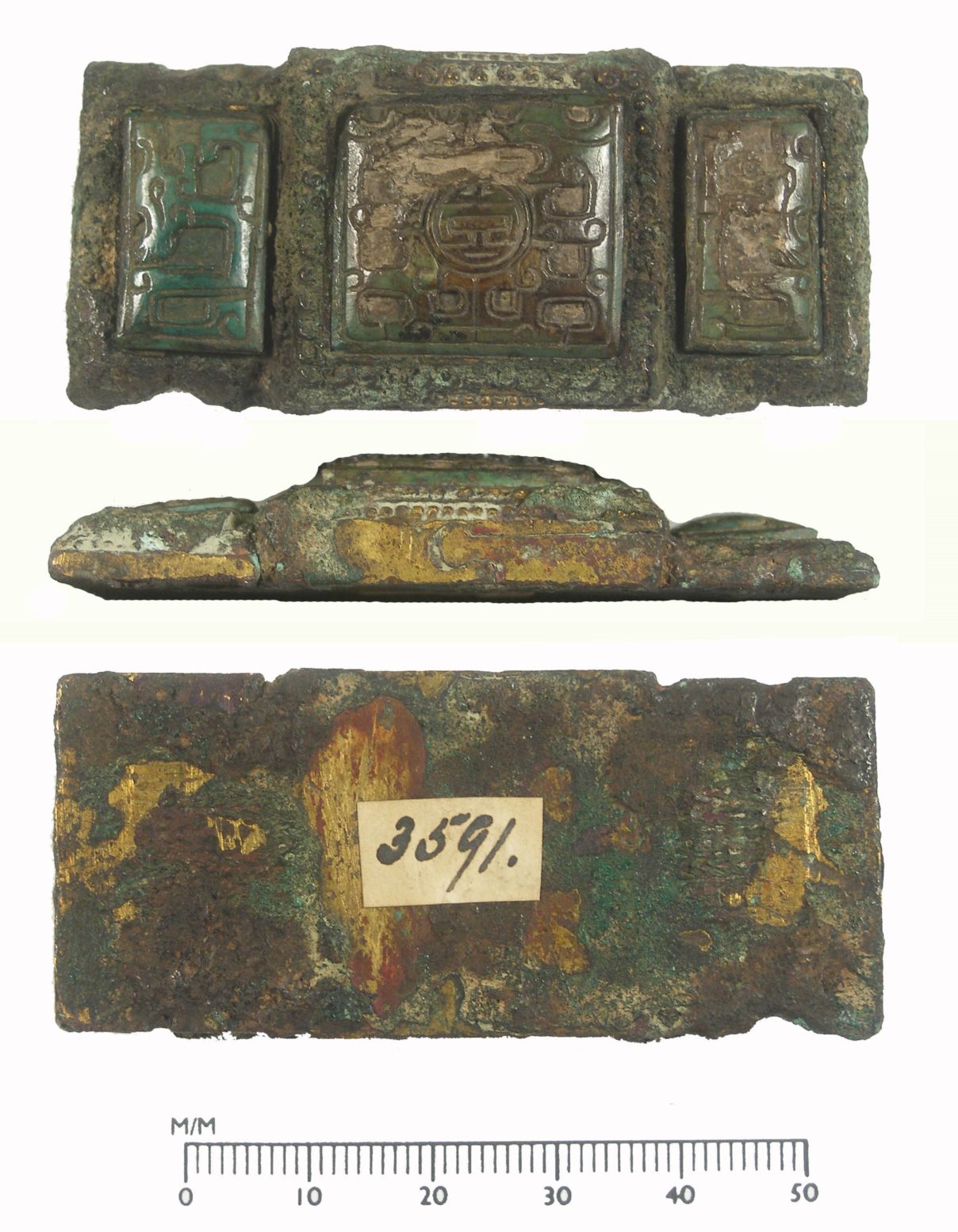August ’21
Gilded Brass Buckle
A Chinese brass buckle from the Oriental Museum collections. The object appears to have been fire-gilded and is inlaid with three green ivory plaques. The largest plaque at the centre shows the character for joy / longevity surrounded by a pair of dragons. The side plaques each contain a dragon.

The frame is decorated with raised beads and spirals, and has been gilded. There is a clasp mechanism, which can be seen in an x-ray but it appears to be no longer workable. There appear to be four holes drilled at each end, which may have retained pins relating to the missing bars on the reverse that would have held the buckle to some fabric.
Mineralised organics on the reverse of the buckle show a woven braid and unwoven fibres. By comparing these fibres to known examples it appears they could be either silk or hemp.
One of the stained ivory plaques appears to be a different shade of green from the other two, and is undamaged, while the others have significant damage to the surface.
Condition
- There is evidence of corrosion on the surface of the object
- There are signs of dirt in the incised decoration on the panels
- The side panels appear loose in their settings
- An old label is attached to the reverse
Conservation
The loose inlay panels were removed from their settings once the excess adhesive was removed from the edges of the setting. This allowed the settings to be cleaned more easily without risk to the panels.

A suitable solution was swabbed onto the object and a scalpel was used to remove the corrosion products revealing the gilded surface below. At certain points the corrosion products could not be entirely removed because the underlying surface would not withstand the physical force required with manual tools and so these areas were left.
Each of the ivory panels was found to have been built up on the reverse to add thickness, and was originally affixed with a white adhesive type material. It was decided that this material should be preserved as far as possible as evidence of how the object was put together. It was, however, uneven on the reverse of each panel, so these needed to be evened out by building up around these deposits, in order to create a stable surface to re-insert into the metal setting.
The panels were surface-cleaned with an appropriate solution using cotton wool swabs. A scalpel and dental pick were used on the carved surfaces and in the recessed areas in particular to remove the film-like grime on the surface and reveal the details of the carved figures.
The reverse sides of the panels were coated with a suitable barrier layer, and then a paste of glass micro-beads and an appropriate adhesive was applied and built up in coats around the remaining paste. This created a flat, even surface on the reverse of each panel while preserving and consolidating the original backing and adhesive. The ivory panels were then re-inserted into the metal settings and adhered in place.
The old museum sticker on the reverse of the object was removed with a drop of water and a scalpel; the ink of the number was fugitive even in water, so as little as possible was used. This label was retained at the request of the Oriental Museum.
Stay tuned for next month’s object!
